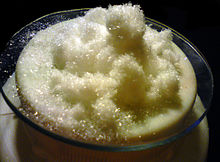Big Perm
Well-Known Member
I used 14 gauge 99.99% silver. I'm using a current of 6VDC @ 200mA, and distilled water. My TDS meter showed a ppm of 1.
I also am using a laser.

I got a few of these rods. I can cut these in half and use them in a smaller container. I'm only making small batches at a time for foliage spraying now and then. This 300ml batch should last me quite a while.


I put a bag over it to try to keep dust and stuff out.

Now it's time to pack that Sherlock, forget what I was doing and when I remember....it'll be done!
It's already working!

All done. I stopped at 41ppm.

I've been wanting to do this for a while, but never got around to it. Pretty soon I'll be able to use it.
I also am using a laser.

I got a few of these rods. I can cut these in half and use them in a smaller container. I'm only making small batches at a time for foliage spraying now and then. This 300ml batch should last me quite a while.


I put a bag over it to try to keep dust and stuff out.

Now it's time to pack that Sherlock, forget what I was doing and when I remember....it'll be done!
It's already working!

All done. I stopped at 41ppm.

I've been wanting to do this for a while, but never got around to it. Pretty soon I'll be able to use it.

